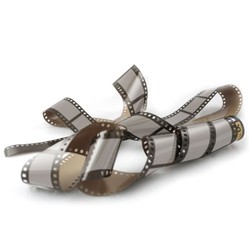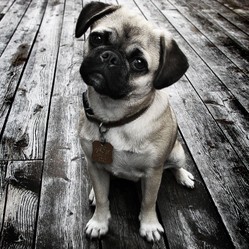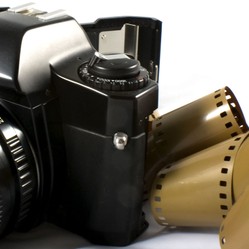
Negative Blisters and Blemishes
by photography
What causes blisters and blemishes on photographic negatives?
A blister is a blemish on negatives and prints caused by bubbles of gas or liquid trapped under the surface of the emulsion. The bubbles may be formed either in the emulsion layer or between the emulsion and the support. Blistering occurs on films, plates and paper prints, and the cause can be diagnosed according to whether the blisters appear after development, fixing or washing.
Blistering During Development
When plates are developed at a high temperature the gelatin may swell and leave the support. Where this happens around the edges, it causes frilling of the emulsion; where it happens inside the margins it causes blistering. This type of blister can be avoided by hardening the emulsion before development, e.g: with an alum hardening bath or a 10 per cent solution of formalin. Once formed the blisters may disappear if the material is immersed in methylated spirit after washing and then dried off normally.
 | Ansel Adams: The Camera (The Ansel Adams Photography Series 1) This is an atrractively priced photography classic made accessible to a wider, new audience. It covers everything from "seeing" the finished photo in advance, to lens choices. I... |
 | The Negative (Ansel Adams Photography, Book 2) The early chapters are devoted to a discussion of light, film and exposure. What follows is a detailed discussion of the zone system, chapters on natural and artificial light an... |
 | The Print (Ansel Adams Photography, Book 3) The technical information is clear and concise, starting with deisinging and euqipping a darkroom and continues through making the first print, ending with all sorts of professi... |
Blistering After Development
This is generally the result of transferring the sensitized material from a developer containing carbonate to a strongly acid stop bath or fixing bath. The resulting chemical action generates carbon dioxide which may collect in bubbles in the emulsion. Absence of hardener in the fixer or the use of a fixing bath much colder than the developer makes matters worse.
The remedies are: to rinse the material thoroughly after development; to use a hardening and fixing bath; and to keep the temperatures of all baths within two or three degrees of each other.
Blistering After Fixing
Water blisters may form on the surface of the material (more especially on prints) during washing immediately after being fixed in a strong fixing bath. The washing water penetrates the gelatin faster than the fixing solution can escape and detaches the emulsion from the support. Once the emulsion has been loosened in this way it is very difficult to get it to adhere after the water has dried out. Local damage to the emulsion, e.g: by creasing or handling with warm fingers increases the likelihood of blisters.
Paper that is carefully handled and fixed in a hardening fixer of the correct strength very rarely suffers from this cause. Blistering after Washing. Very cold washing water containing an excess of dissolved air (as most high pressure main supplies are likely to do) is another cause of blistering. In this case the trouble appears after washing and results from air bubbles liberated from the water as it warms up to the temperature of the atmosphere.
The remedy here is to allow the water to stand for some time and then to wash in successive changes.
Modern sensitized materials will stand a surprising amount of ill-treatment without blistering, and if they are handled with normal care and processed according to the maker's recommendations the risk of trouble on this score is negligible.
You might also like
Photographing Dogs and PuppiesPhotographing dogs is difficult. The best tip to anyone attempting to take pi...
Camera Repair


 Photographic Styleon 10/14/2011
Photographic Styleon 10/14/2011
 Interchangeable Lenseson 09/28/2011
Interchangeable Lenseson 09/28/2011
 Photographyon 08/22/2011
Photographyon 08/22/2011
 Daguerreotypeon 08/24/2011
Daguerreotypeon 08/24/2011



Comments